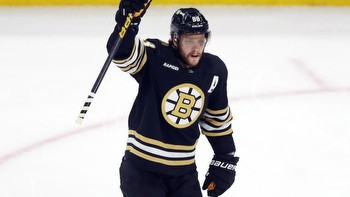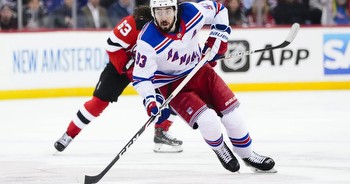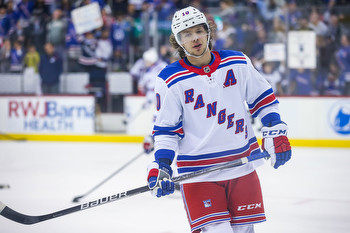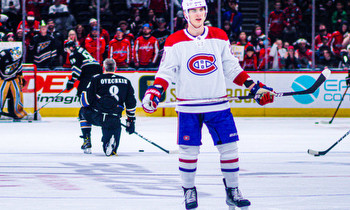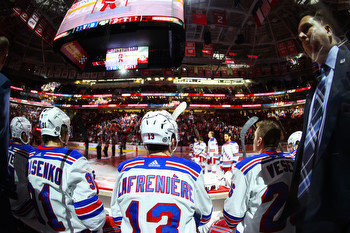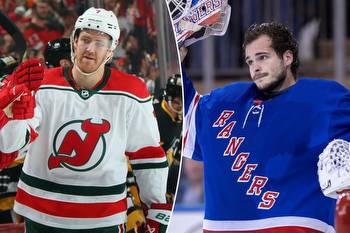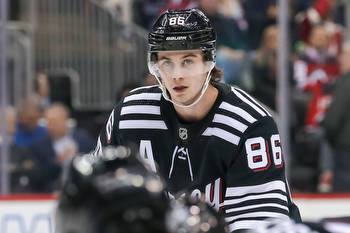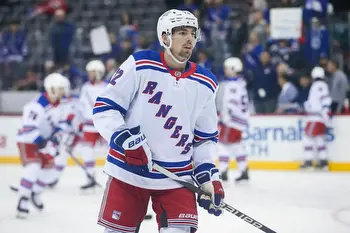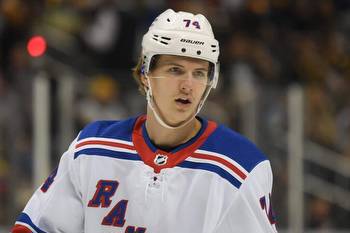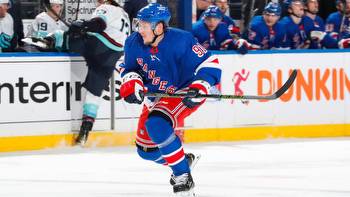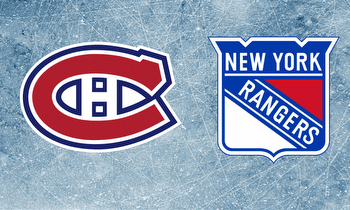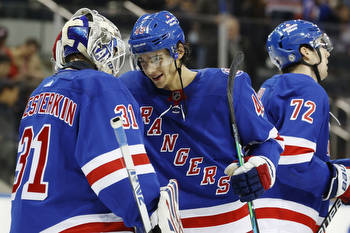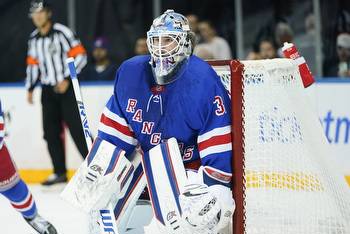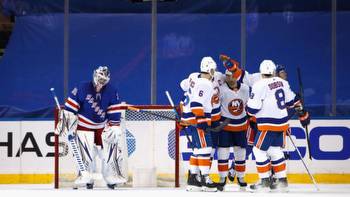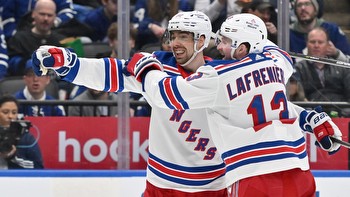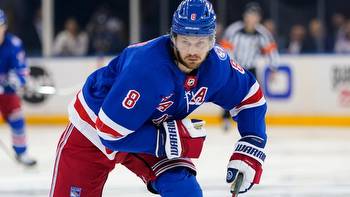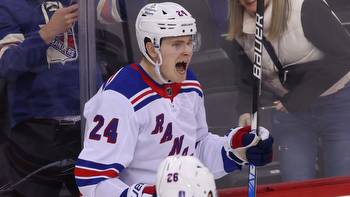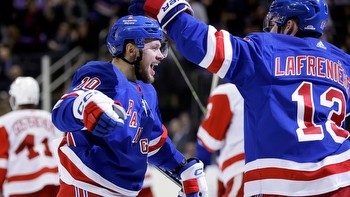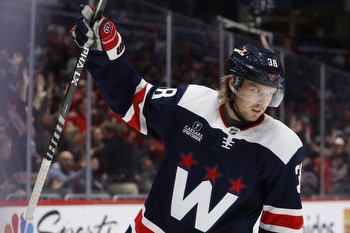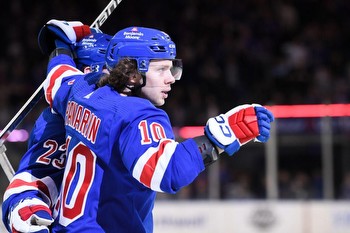Rangers’ big question: Can Kakko and Lafrenière finally step up to provide high-end support?
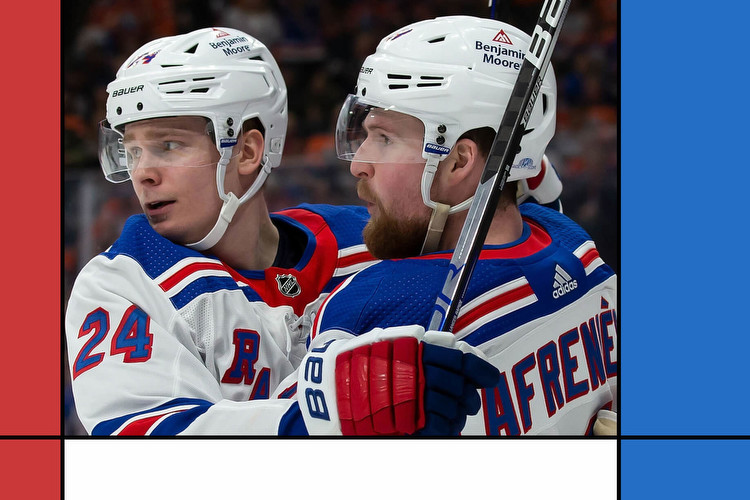
Star power doesn’t grow on trees in the NHL. A team’s best bet is through the draft since players can’t hit unrestricted free agency for much of their prime. The higher the pick, the higher the ceiling a player tends to have — and the quicker they’re anticipated to reach it.
So when a team drafts at No. 1 or No. 2, impact status is anticipated from those players pretty soon into their careers.
That hasn’t been the case in New York — not with 2019 No. 2 pick Kaapo Kakko or 2020 No. 1 pick Alexis Lafrenière.
That’s why, for the second straight season, the Rangers’ big question revolves around whether their young skaters can become the high-end support this roster craves. The difference this year is that it’s squarely on Kakko and Lafrenière, now that other up-and-coming players have proven they can be that support.
Kakko’s NHL career got off to a particularly tough start. There was so much hype around him after a busy draft year — between his regular season and international tournaments — and the winger didn’t come close to living up to it. He’s not the first No. 2 pick to struggle out of the gate, nor will he be the last, but his rookie season was that poor relative to others drafted there in the analytics era.
The bright side is several No. 2 picks who stumbled initially went on to take a leap forward the next year — Tyler Seguin and Sam Reinhart are two prime examples. For Kakko, there have only been incremental steps year over year. The scoring still hasn’t popped, and a lack of power-play time contributes to that, but at least his play below the surface has improved. There’s been more ice time to go around on the right side, and Kakko has benefited from some of it. But there’s still a gap between where he is and the dominant play-driver he’s expected to become.
Lafrenière’s rookie season also stood out for the wrong reasons relative to other players drafted No. 1. The year before, Jack Hughes paved a bit of a path for that after some generational talents drafted before him set the bar high. Hughes, the 2019 No. 1 pick, struggled in his first NHL season and then showed it doesn’t have to define a player’s career. But Hughes has quickly developed into a superstar and Lafrenière hasn’t come close to that.
New York Rangers 2023-24 season preview
Even when there’s been a glimmer of hope with Lafrenière — in 2021-22 his five-on-five goal-scoring stood out relative to the team — he hasn’t built on that enough. Development isn’t linear, but at a certain point, the Rangers need more consistent progress.
Unlike Hughes, and Kakko to an extent, there hasn’t been as much opportunity for Lafrenière, which has probably influenced his progression (or lack thereof) so far. The Rangers have Artemi Panarin and Chris Kreider on left wing ahead of him on the depth chart, so starting on the third line didn’t put him in a perfect position to succeed. And even if Lafrenière crushed it, he’d have to outperform one of the Rangers’ stars, someone who has been one of the most reliable scorers for the team. So the deck was already stacked against him in that sense. His only real shot at top-six minutes was on the right, and he kept getting bounced around the lineup before he could hit his strides. That’s an opportunity available to Lafrenière again this year, but there’s a certain level he has to reach to stay in the top six.
Across their first seven post-draft seasons, the No. 1 pick is expected to bring 17.7 wins to a lineup. The No. 2 pick follows at 12.3. Four years into his NHL career, Kakko isn’t close to measuring up to the pace needed for that. Neither is Lafrenière, three years deep.
Of course, there can always be outliers, even with top picks — just as there can be later selections who are miles ahead of average.
The Rangers can get by even if their top picks can’t emerge into stars just yet. But if they can become reliable supporting players, like Filip Chytil and K’Andre Miller have, they’re only going to better the team’s Stanley Cup hopes.
As it stands, neither one projects to overwhelm even as a part of the secondary cast. At this point, New York either needs The Kid Line (Kakko, Lafrenière and Chytil) to be a bona fide, top-tier third line, or these two players need to hit true top-six caliber — especially if members of the core start declining in the near future. Kakko may project relatively well for a team’s seventh forward at a plus-1 Net Rating, but that seems to stem more from his defensive growth than his offensive ability, which is supposed to be the highlight of his game. The team needs him to move up the ranks and start looking like a capable fourth or fifth forward who can be relied on. Lafrenière measures up even worse for his position, with even fewer positives to draw from on either end of the ice.
The model can’t project a breakout; it can only base ratings on what a player has actually done to this point and project a reasonable output from there. Maybe the team hopes a coaching change will do the trick, but considering Peter Laviolette is now the two forwards’ third NHL bench boss to this point, it’s clear that isn’t the only answer. If Laviolette actually gives these two a consistent opportunity in a position that can maximize their skills, that’s one part of the equation. The players still have to raise their levels, which would obviously be eased with high-quality teammates at their side in the top six, and maintain that role. If not, management will probably have to turn to the trade market for the third straight year to find more reliable scoring options.
Kakko and Lafrenière failing to hit their ceilings means there are probably bigger problems in New York. Drafting, even at such a high slot, is just one part of the process when the leaders of that class aren’t considered generational. Development can be just as important, and there should have been more emphasis on it, especially for a team that felt it had a green light to accelerate the process given its high draft luck.
The New Jersey Devils represent a youth moment while the Pittsburgh Penguins are built on high-end veterans. The Rangers have an opportunity to have the best of both worlds if the two players who were thought to have franchise-cornerstone potential can finally start to break out. That’s what gives this team not just the best chance of contending this year, but a sustainable window over the next few years.

